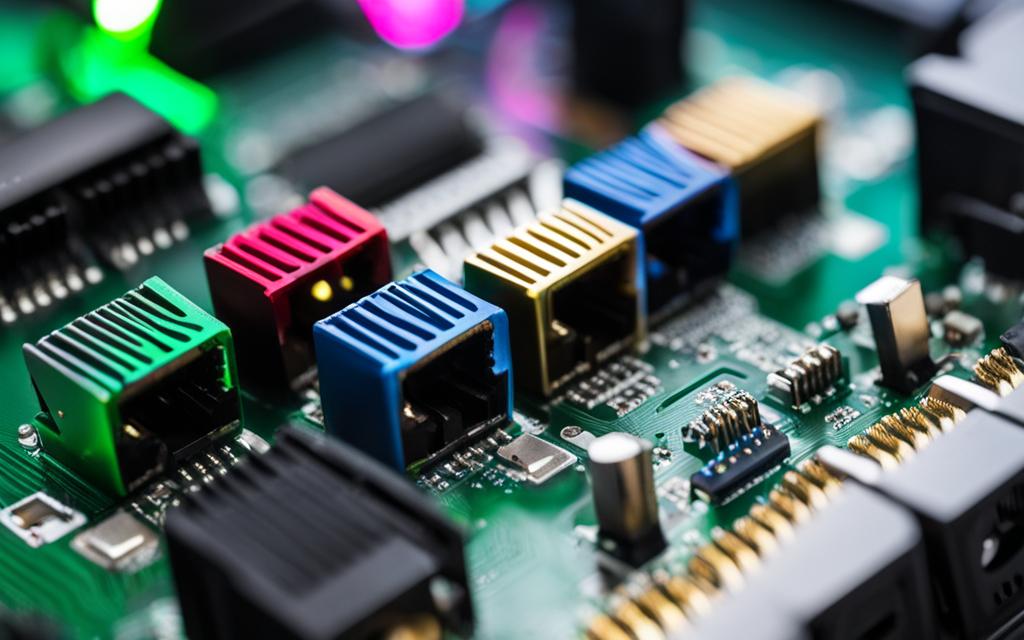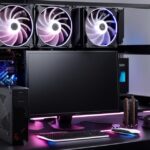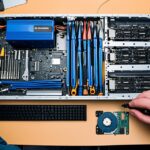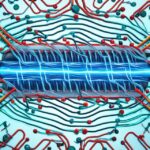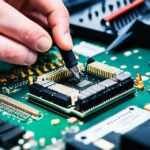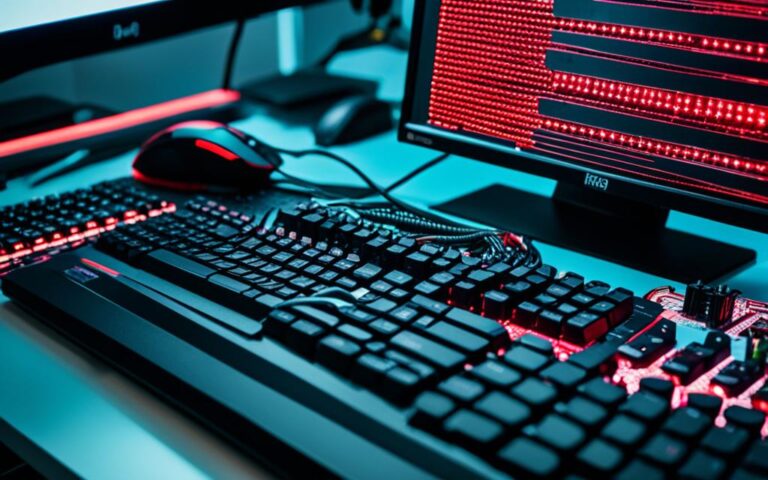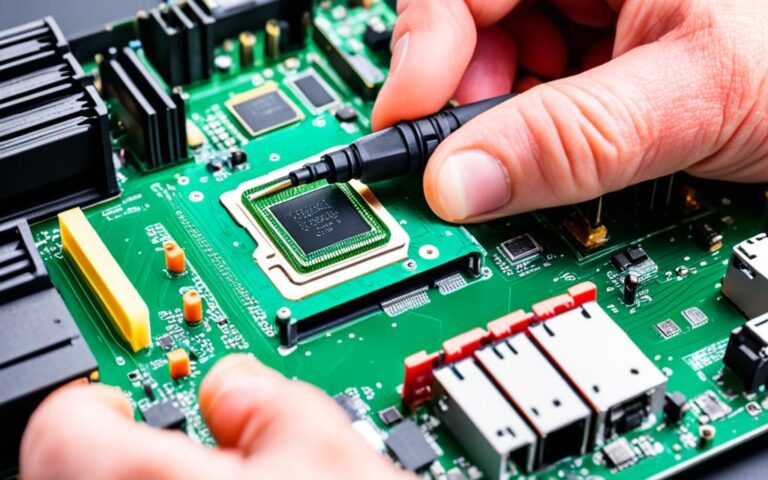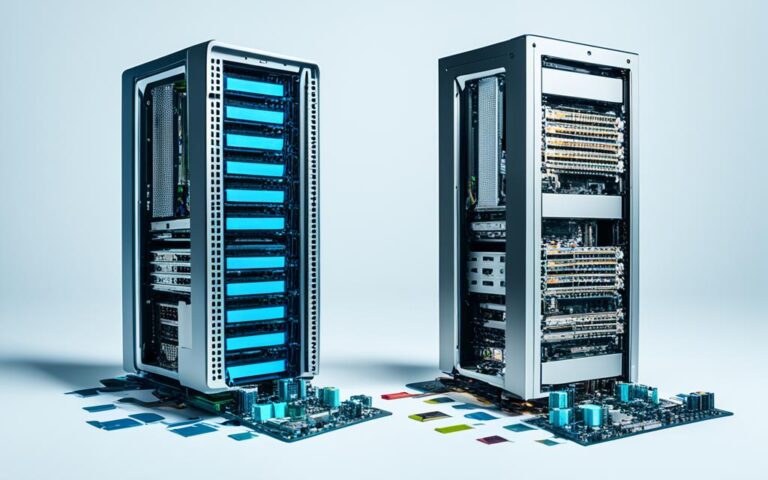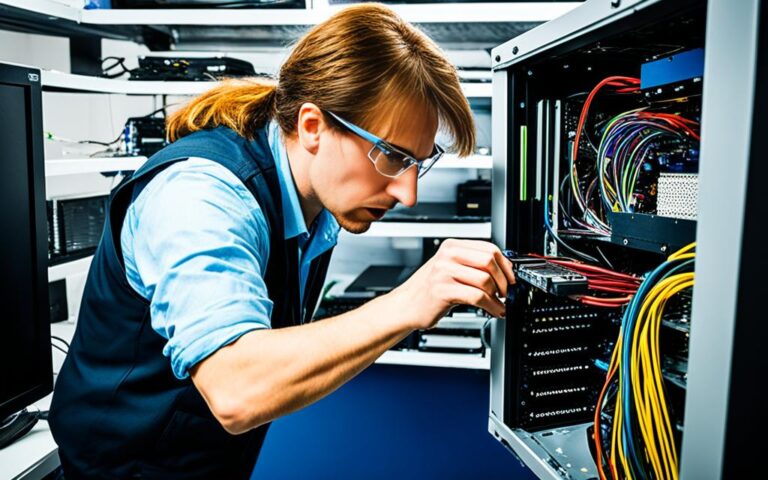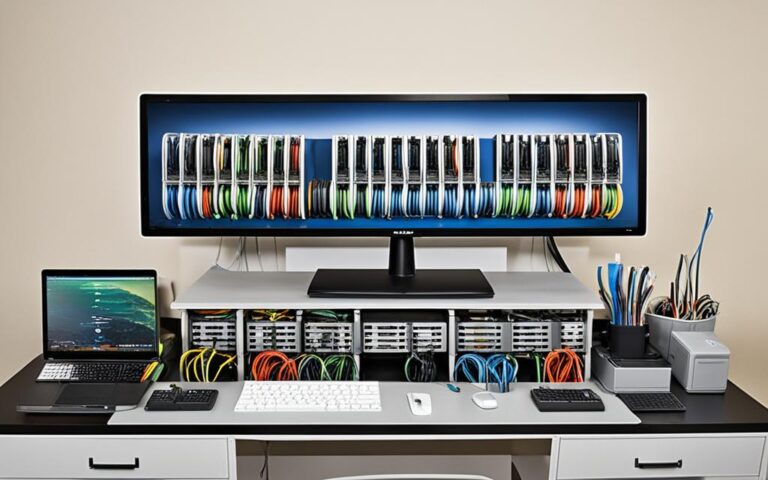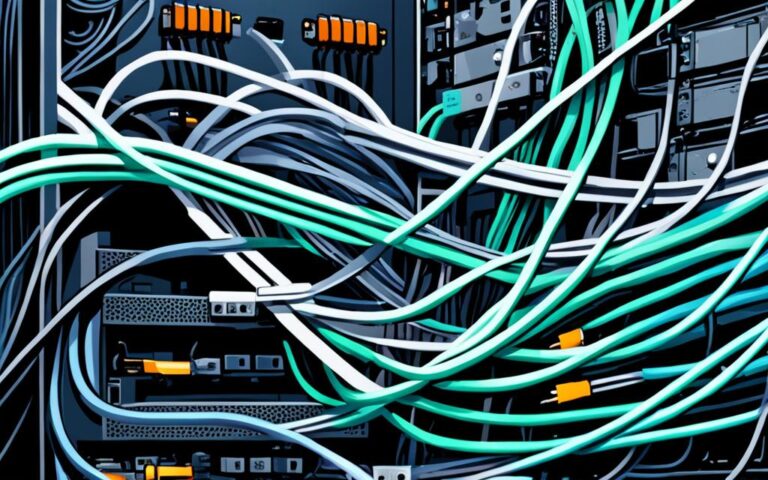Solving Desktop Ethernet Port Failures
In an era driven by connectivity and digital communication, reliable network connectivity is essential for seamless access to the internet. The Ethernet port, an integral component of modern computer systems, serves as the gateway to the local network and the broader internet. However, users may encounter occasional issues with their Ethernet ports, disrupting their ability to connect to the network. This guide will explore common symptoms of Ethernet port failure on motherboards and the possible causes of these malfunctions.
Importance of Ethernet ports on Motherboards
Ethernet ports are an indispensable component integrated into motherboards, facilitating network communication between computers and other devices through wired connections. These ports enable high-speed data transmission, making them ideal for tasks that require a stable and uninterrupted network connection.
With Ethernet ports, users can experience reliable and secure network communication, ensuring smooth data transmission for various applications. Whether it’s downloading large files, streaming high-definition videos, or participating in online gaming, Ethernet ports offer the stability and reliability needed for optimal performance.
Besides their speed and stability, Ethernet ports also boast compatibility with a wide range of devices. From desktop computers and laptops to gaming consoles and smart TVs, these ports can establish connections with various devices, promoting seamless network integration.
Increase Stability and Reliability
Ethernet ports provide a more stable and reliable network connection compared to wireless alternatives. This wired connection eliminates interference from external factors, such as signal congestion, neighboring networks, or physical obstacles. As a result, users can enjoy consistent network performance without the risk of signal drops or fluctuations.
Enhance Compatibility
Since Ethernet ports are universally compatible, they can be seamlessly integrated into different devices and network environments. This compatibility ensures that users can connect their devices to networks without compatibility issues, making Ethernet ports a versatile solution for both home and business settings.
Elevate Data Transmission Speed
With Ethernet ports, users can experience faster data transmission speeds compared to wireless connections. This advantage is especially crucial for activities that require large data transfers, such as file sharing, video conferences, or cloud backups. Ethernet ports enhance productivity and efficiency by reducing waiting times and enabling smooth data flow.
“Ethernet ports provide a stable and reliable network connection, ensuring uninterrupted data transmission for various applications.”
The importance of Ethernet ports on motherboards cannot be overstated. Their ability to establish wired connections, deliver high-speed data transmission, and ensure stability and reliability make them indispensable in today’s interconnected world.
| Benefits of Ethernet Ports on Motherboards |
|---|
| Stable and reliable network connection |
| Compatibility with various devices |
| Fast data transmission speeds |
Common Symptoms of Ethernet Port Not Working on Motherboard
When an Ethernet port on a motherboard is not working correctly, it can result in various frustrating symptoms that hinder internet access and limit connectivity. Understanding these symptoms is essential for troubleshooting and resolving the issue promptly. Below are some common signs that indicate Ethernet port malfunction on a motherboard:
- Inability to access the internet: Users may experience a complete loss of internet access despite a functioning network connection.
- Limited or no network connectivity: The Ethernet port may exhibit limited or no connection to the network, leading to slow or intermittent data transfer.
- Network cable unplugged messages: Prompt notifications indicating that the network cable is unplugged can be a clear indication of Ethernet port issues.
- Intermittent connection: The Ethernet port may establish an erratic connection, causing frequent disconnections and disruptions in network communication.
- No lights or unusual behavior: In some cases, the Ethernet port’s indicator lights may not illuminate or show abnormal behavior, indicating a malfunctioning port.
- Failed network diagnostics: Running network diagnostics or troubleshooting procedures may result in failed tests or diagnostics specifically related to the Ethernet port.
Experiencing these symptoms can significantly impact productivity and disrupt essential online activities. Identifying these signs early on is critical in diagnosing and resolving Ethernet port issues effectively.
“Understanding the symptoms of a malfunctioning Ethernet port is crucial for diagnosing network connectivity issues and resolving them promptly.”
| Symptom | Description |
|---|---|
| Inability to access the internet | The Ethernet port fails to establish a connection to the internet. |
| Limited or no network connectivity | The Ethernet connection is slow, unstable, or completely nonexistent. |
| Network cable unplugged messages | Notifications indicating that the network cable is not properly connected or detected by the port. |
| Intermittent connection | The Ethernet connection drops or fluctuates intermittently. |
| No lights or unusual behavior | The Ethernet port’s indicator lights do not illuminate or exhibit abnormal behavior. |
| Failed network diagnostics | Network diagnostic tests or procedures related to the Ethernet port fail to provide successful results. |
Possible Causes of Ethernet Port Malfunction
Ethernet port malfunctions on desktop computers can occur due to various factors, ranging from hardware-related issues to software-related problems. Understanding these potential causes can help diagnose and resolve Ethernet port failures effectively.
Hardware-related Issues
Hardware-related problems can lead to Ethernet port malfunctions. Some common hardware issues include:
- Physical damage: Accidental damage or impact to the Ethernet port or the connecting cable can result in connectivity issues.
- Loose connections: Poorly connected cables or loose Ethernet port connections may disrupt network communication.
- Defective Ethernet cable: Faulty or damaged Ethernet cables can hinder the transmission of data signals.
- Faulty network device: A malfunctioning network device, such as a router or switch, can cause problems with Ethernet connectivity.
- Electrical surges: Power surges or electrical fluctuations can damage Ethernet ports and affect their performance.
- Outdated firmware: Ethernet ports rely on firmware to function correctly, and outdated firmware can result in compatibility issues and malfunctions.
Software-related Issues
Software-related problems can also contribute to Ethernet port malfunctions. The following software-related issues are commonly encountered:
- Outdated or incompatible drivers: Drivers facilitate communication between the operating system and the Ethernet port. Outdated or incompatible drivers can lead to connection failures.
- Incorrect network settings: Incorrectly configured network settings can prevent the Ethernet port from establishing a proper connection.
- Software conflicts: Conflicts between different software applications or security programs can interfere with the functioning of the Ethernet port.
- Malware or virus infections: Malicious software or viruses can compromise the stability and performance of the Ethernet port.
- Operating system updates: In some cases, updates to the operating system can cause compatibility issues with the Ethernet port and result in malfunctions.
Identifying the specific cause of an Ethernet port malfunction is crucial for effective troubleshooting and resolution. By considering both hardware and software-related factors, users can take the necessary steps to restore uninterrupted network connectivity.
| Hardware-related Issues | Software-related Issues |
|---|---|
| Physical damage | Outdated or incompatible drivers |
| Loose connections | Incorrect network settings |
| Defective Ethernet cable | Software conflicts |
| Faulty network device | Malware or virus infections |
| Electrical surges | Operating system updates |
| Outdated firmware |
Initial Checks and Preparations
Before delving into advanced troubleshooting, it is essential to perform initial checks and preparations to diagnose and resolve Ethernet port issues effectively. By taking these preliminary steps, you can ensure uninterrupted connectivity and identify any potential physical or visual concerns that may be causing the problem.
Verifying Physical Connections
To begin, inspect the physical connections of the Ethernet port on your desktop computer. Ensure that the Ethernet cable is securely plugged into both the Ethernet port on your computer and the corresponding port on the network device (such as a router or modem). Sometimes, loose connections can result in intermittent connectivity or no connection at all.
Visually Inspecting the Ethernet Cable
Next, visually inspect the Ethernet cable for any signs of damage. Check for frayed or bent connectors, kinks in the cable, or any other visible issues that may affect its functionality. Damaged cables can significantly impact network connectivity and data transmission.
Checking the Indicators on the Network Device
Finally, examine the indicators on the network device, such as the router or modem, to ensure proper communication between the connected computer and the network. These indicators can provide valuable insights into the status of the Ethernet port and its connection. Look for any blinking lights, unusual behaviors, or error indicators that could indicate a potential problem.
By performing these initial checks and preparations, you can gather valuable information about the state of your Ethernet port and identify any visible issues that may be causing the problem. These steps serve as a foundation for further troubleshooting and can help you narrow down the potential causes of Ethernet port malfunctions.
Update Network Card Driver
When experiencing Ethernet connection issues, one of the first troubleshooting steps is to update the network card driver. Outdated drivers can cause compatibility issues and hinder the proper functioning of the Ethernet port on your desktop computer.
To update the network card driver:
- Access the manufacturer’s website and navigate to the Support or Downloads section.
- Search for the specific driver required for your network card model.
- Download the latest driver version compatible with your operating system.
- Open the downloaded driver file and follow the installation instructions provided.
- Once the installation is complete, restart your computer to apply the driver updates.
Updating the network card driver can often resolve common connectivity issues and improve the overall performance of your Ethernet port.
Additional Troubleshooting Steps:
If updating the network card driver does not solve the problem, consider trying the following:
- Check the Ethernet cable for any visible damage or loose connections. A faulty cable can cause intermittent or no connectivity.
- Test different ports on your router or switch to ensure that it’s not a port-specific issue.
- Temporarily disable your antivirus or firewall software, as they may be blocking the network connection.
- Ensure that the Ethernet option is enabled in the device manager settings of your computer.
By following these troubleshooting steps, you can increase the chances of resolving Ethernet connection problems and enjoy uninterrupted network connectivity on your desktop computer.
Conclusion
Ensuring reliable Ethernet connectivity is vital in today’s interconnected world. When faced with Ethernet port malfunctions on your desktop computer, it is crucial to diagnose the problem accurately and take appropriate steps to repair it. By following the troubleshooting steps outlined in this guide and seeking expert solutions, you can achieve uninterrupted connectivity and eliminate the frustration caused by Ethernet port failures.
When your Ethernet port is not working correctly, it can lead to limited or no internet access, intermittent connectivity, or failed network diagnostics. However, by conducting initial checks, such as verifying physical connections and inspecting your network device indicators, you can quickly identify possible issues and address them accordingly.
In some cases, updating your network card driver, trying different ports on your router, checking your Ethernet cable, and temporarily disabling antivirus or firewall settings can resolve common Ethernet connection problems. However, if you are unable to resolve the issues on your own, it is highly recommended to seek expert solutions from professionals who specialize in Ethernet port repair.
